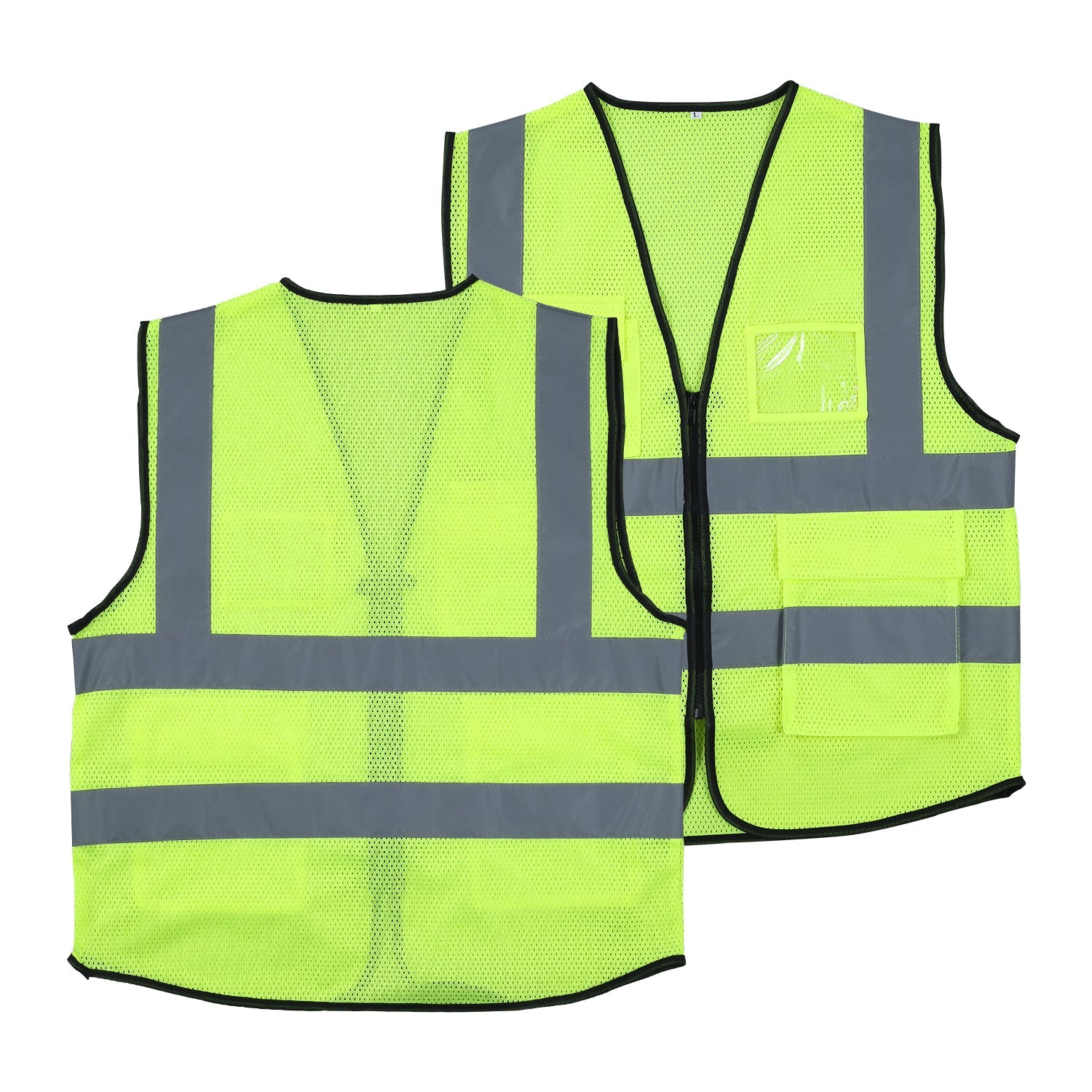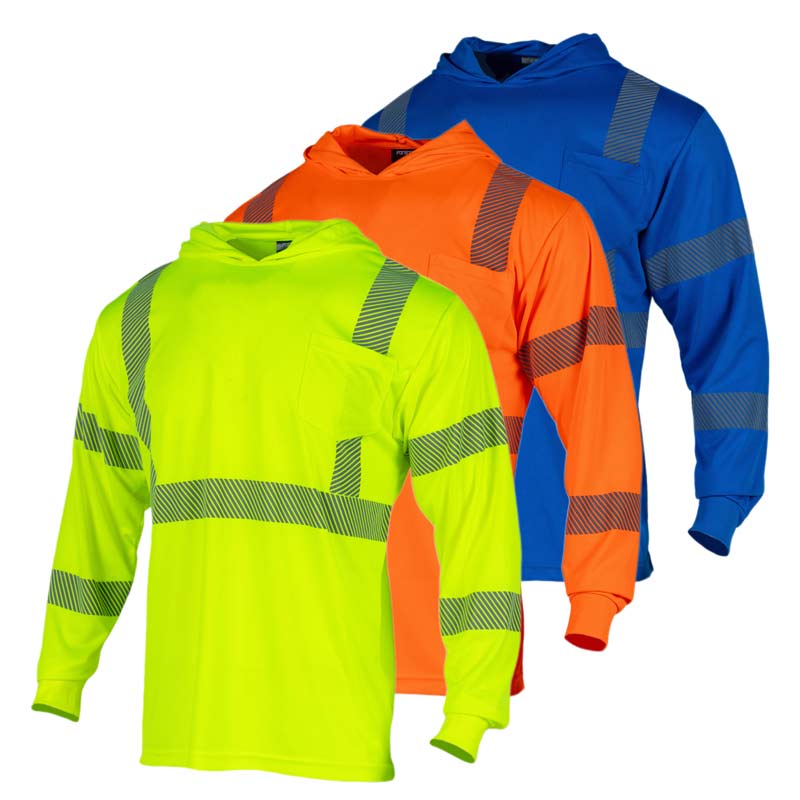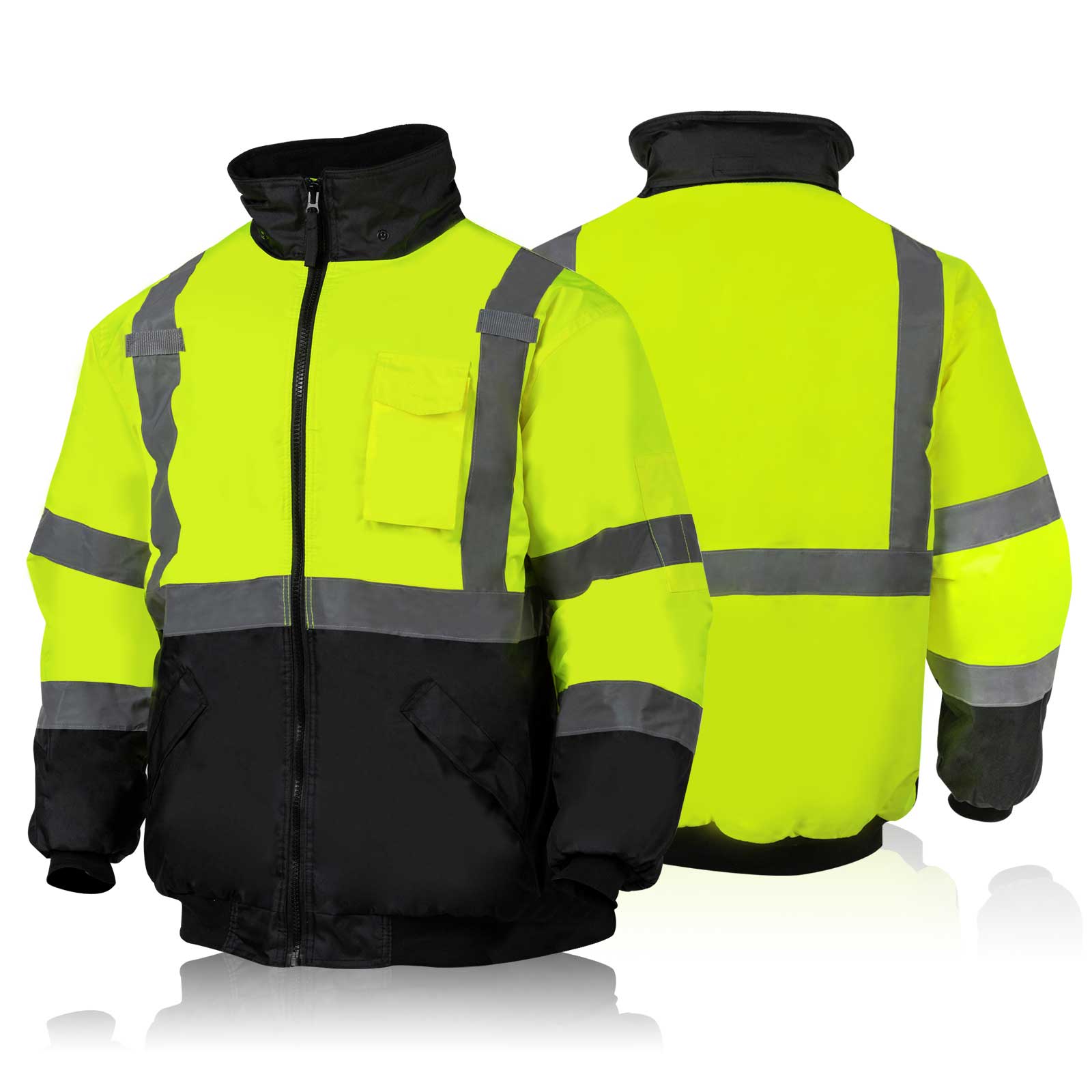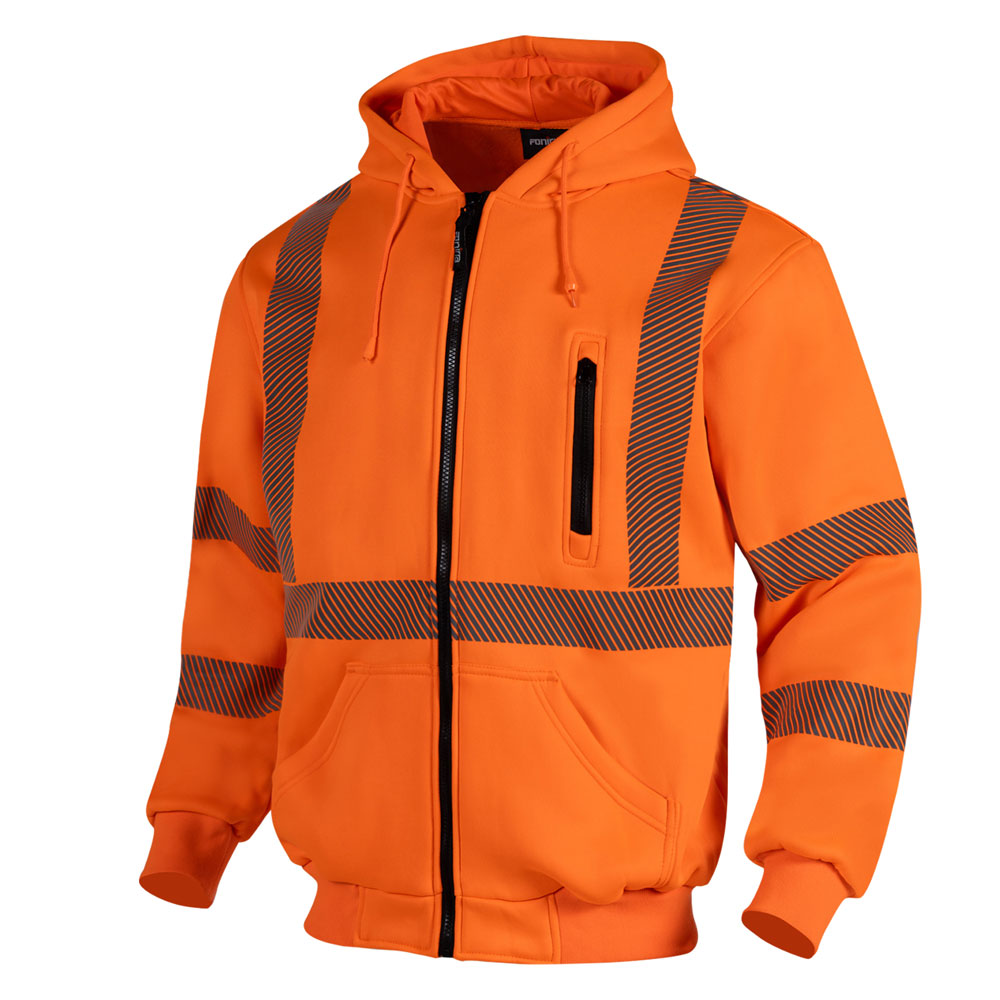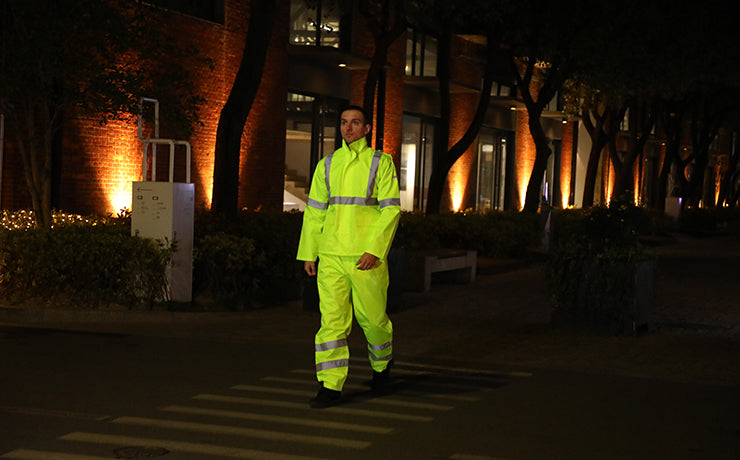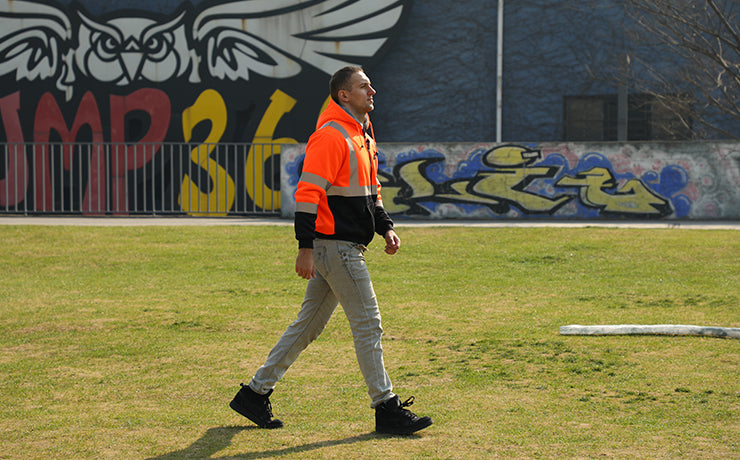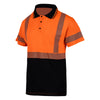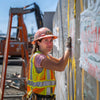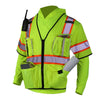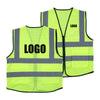ANSI-ISEA 107 2020 vs ANSI-ISEA 107 2015: What are the Differences?
When it comes to ensuring the safety of construction workers, choosing the right high-visibility (hi-vis) clothing is crucial.
With the evolving landscape of construction sites and the paramount importance of worker visibility amidst the hustle of machinery and vehicles, staying updated with the latest ANSI-ISEA 107 standards can make all the difference.
Whether you're refreshing your team's gear or setting up new employees for success, understanding the distinctions between the 2015 and 2020 updates of these standards is key to making informed decisions that prioritize safety and compliance on the job site.
What are the ANSI-ISEA 107 Standards?
The ANSI-ISEA 107 standards are guidelines that set the bar for high-visibility safety apparel and accessories. ANSI safety vest standards ensure that workers are seen in all types of environments, whether at night, in the rain, or around heavy machinery. The purpose is to reduce accidents and enhance safety in workplaces like construction sites and roadways.
ANSI (American National Standards Institute) and ISEA (International Safety Equipment Association) work together to develop these standards, making sure they're updated to reflect new safety technologies and workplace needs. Their role is crucial in developing safety norms that save lives by making workers visible.
The ANSI-ISEA 107 2015
The 2015 revision of the ANSI-ISEA 107 standard was a significant update that introduced detailed guidelines for high-visibility safety apparel.
Key Features and Requirements
This revision is all about making sure that safety vests, shirts, and other gear are designed to stand out and protect workers. It details:
-
Fabric colors and brightness: To catch the eye in different settings.
-
Reflective materials: These must be visible from far away, even in low light.
-
Placement of reflective materials: Making sure they outline the human form so others can quickly recognize a person.
Classification of High-Visibility Safety Apparel
-
Type O (Off-road use): Ideal for environments away from traffic, like mining operations or warehouses, where vehicles still operate.
-
Type R (Roadway use): For workers near or on roads. It ensures they're seen by drivers, reducing accidents.
-
Type P (Public safety use): Designed for emergency responders and law enforcement, allowing them to be visible while responding to emergencies.
Performance Classes and Design Requirements
Here is an overview of the safety vest classes
-
ANSI Class 1: Offers minimal visibility for areas with low traffic and speeds. It's for workers who have a good separation from traffic.
-
ANSI Class 2: ANSI 107 class 2 is for workers who are closer to traffic or need greater visibility. It's more visible than Class 1 and is often used by road construction workers and crossing guards.
-
ANSI Class 3: Provides the highest level of visibility. It's for workers in dangerous environments with high-speed traffic or limited visibility. ANSI Class 3 requirements ensure full-body visibility with sleeves and more reflective areas.
Learn more about ANSI Classes: https://www.fonirra.com/blogs/fonirra-blog/ansi-class-differences
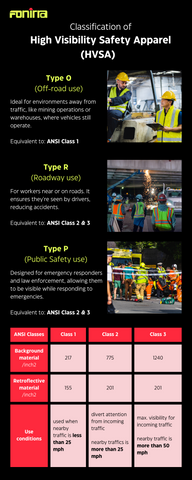
Introduction to ANSI-ISEA 107 2020 Revision
The latest update to the ANSI/ISEA 107 standard in 2020 was made to keep up with advancements in safety equipment technology and research. This update aims to enhance the protection and visibility of workers in various environments.
The changes include updated label markings, the introduction of single-use disposable coveralls, flame resistant protective clothing, and optional testing for overall luminance. New high-visibility garments have also been added, ensuring a wide range of protective clothing is covered under the standard.
ANSI-ISEA 107 2020 Vs. ANSI-ISEA 107 2015
Let’s take a look at what changed from the 2015 to the 2020 version of the ANSI-ISEA 107 standards.
Changes in Classification and Requirements
The 2020 update of the ANSI-ISEA 107 standard brought in some important changes to make high-visibility clothing even better. Here's what's new:
-
Removed Criteria for High-Visibility Accessories: The focus shifted towards the design and requirements that define the class of the garment, leaving out high-visibility accessories.
-
Introduction of Single-Use Disposable Coveralls: There are now specific guidelines for these coveralls, considering jobs that might dirty clothes quickly.
-
Nighttime Luminance Testing: Garments can now be tested for how well they are seen at night, offering a new way to ensure safety after dark.
-
Aligned Testing Methods: The ways we test these clothes have been updated to match other tests for material strength and durability.
New Additions in the 2020 Revision
With the latest revision, ANSI-ISEA 107 acknowledges the changing needs in workplace safety:
-
Single-Use Disposable Coveralls: For the first time, the standard includes guidelines for coveralls meant for one-time use, helping to keep workers clean in messy environments.
-
Unique Marking Requirements: These new coveralls come with their own set of marking rules to make sure they meet safety standards.
-
Optional Nighttime Luminance Measurement: There's now a choice for manufacturers to test how visible garments are at night, making sure workers are seen in low light conditions.
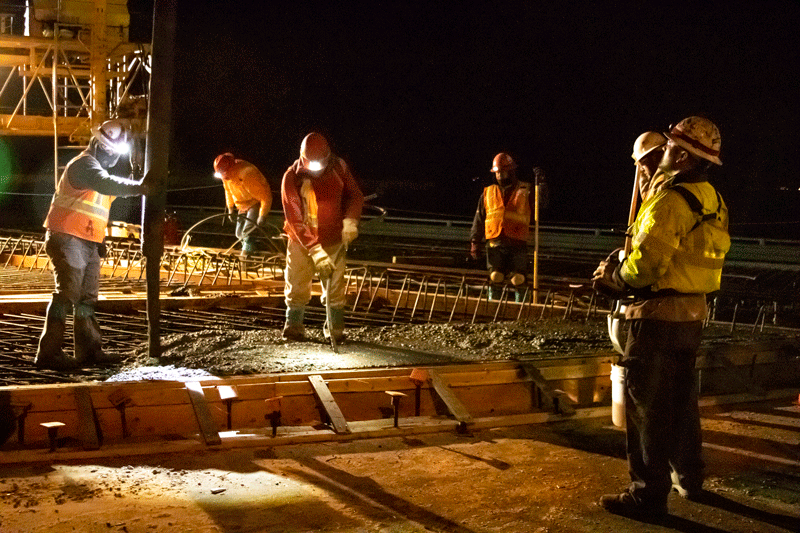
source: Arizona Department of Transportation
Enhanced Performance and Testing Standards
The 2020 revision also upgraded how we test and consider the performance of high-visibility clothing:
-
No More High-Visibility Accessories Criteria: This change simplifies the standards, focusing more on the garment itself rather than accessories.
-
360-Degree Reflective Visibility: New rules ensure that reflective materials are used effectively all around the garment for better visibility from any angle.
-
Revised "Torso Area" Definition: Clarity on what parts of the garment count as the torso area helps ensure consistent safety features.
-
No Maximum Wash Cycle Requirements: Removing this requirement addresses confusion about how long a garment remains effective.
-
New Requirements for Segmented or Perforated Tape: Reflecting their growing use, there are now specific testing standards for these types of reflective materials

The 2020 revision of ANSI-ISEA 107 reflects a comprehensive approach to improving worker visibility and safety through both traditional and innovative protective garments. By adapting to the latest in fabric and reflective material technology, the standards set a new benchmark for personal protective equipment in various work environments.
Moving from ANSI-ISEA 107 2015 to 2020 Standards
Transitioning from the ANSI-ISEA 107 2015 standards to the 2020 version is crucial for enhancing worker visibility and safety across various work environments.
The ANSI and the ISEA have made significant updates to improve high visibility safety apparel (HVSA). Here's guidance for a smooth transition:
1. Understand the Key Changes:
Begin by familiarizing yourself with the significant updates, including the introduction of single-use disposable coveralls, updated performance classes for high visibility materials, and enhanced requirements for reflective and fluorescent materials.
2. Evaluate Current Inventory:
Assess your existing inventory of safety vests, high visibility clothing, and other personal protective equipment (PPE) to determine what meets the updated ANSI/ISEA 107 2020 standards. Pay special attention to the performance class, background material, and reflective materials used.
3. Plan for Upgrades:
For items not meeting the updated standards, such as ANSI 107 Class 3 gear or Type R garments for roadway workers, plan for gradual upgrades. Consider the work environment, such as construction sites, highway construction zones, or areas with temporary traffic control, to prioritize which items to update first.
4. Educate and Train Staff:
Provide training sessions for workers and safety managers about the new standards. Highlight the importance of high visibility materials, safety vest colors, and the role of retroreflective materials in enhancing nighttime visibility. Emphasize the differences between safety orange, safety yellow, and fluorescent yellow-green for different work environments.
5. Focus on Special Requirements:
Pay attention to the specific needs of your workforce, including the requirements for smaller-sized workers, flame resistance for those in hazardous areas, and the proper use of high visibility accessories. Ensure that the full range of high visibility gear, including vests, jackets, and pants, meets the performance requirements for visibility and tear resistance.
6. Work with Accredited Suppliers:
Ensure that your high visibility apparel and accessories are sourced from suppliers that comply with the ANSI/ISEA 107 2020 standards. Look for products tested by accredited laboratories to guarantee compliance with reflective striping, background fabric, and combined performance materials standards.
For those needing to comply with the ANSI/ISEA 107 2020 standards, Fonirra stands out as a trusted supplier of high-visibility safety apparel. Fonirra's product range covers everything from safety vests and hi-vis jackets to shirts and FR clothing, catering to various work conditions and risk levels.

Fonirra's offerings are designed to meet the specific requirements for visibility and safety, including Class 1 to Class 3 garments for different visibility needs. With a focus on compliance and worker safety, Fonirra is a go-to for ANSI/ISEA 107-2020 compliant high-visibility gear.
Conclusion
With the introduction of enhanced retroreflective materials, combined performance materials, and brighter fluorescent materials, visibility for workers has never been better. These updates ensure that whether day or night, in any weather or lighting, workers wearing high-visibility gear are seen, keeping them safer on the job.
It's a big step forward in workplace safety, leveraging the latest in material technology to enhance visibility and protect lives.
-
Posted in
ansi/isea 107, high-vis clothing, product guide

